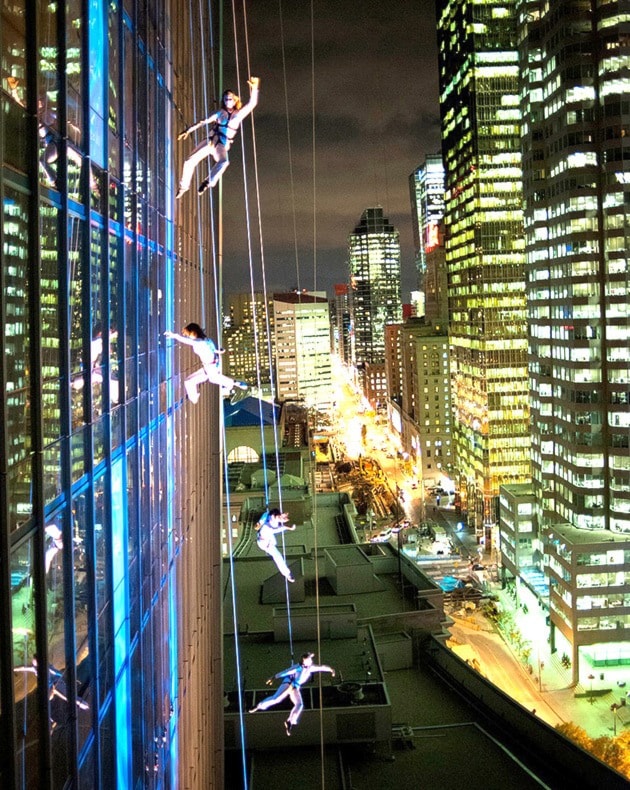The Revelstoke Performing Arts Centre will host Aeriosa Dance Society on Feb. 1–8 for its first ever dance residency; the non-traditional dance troupe’s mountaineering-influenced aerial performances are a good fit for a town passionate about mountain culture.
Aeriosa artistic director and choreographer Julia Taffe joined me for an interview from the Banff Centre, where she’s hosting a residency of Refugia, before bringing it to Revelstoke for a series of presentations, workshops, rehearsals and performances at the Revelstoke Performing Arts Centre and RSS from Feb. 1–8.
“The work is really inspired by the mountains; it’s a fusion of the technology used for rock climbing, basically put to different purpose, for the purpose of creating art and vertical spaces,” Taffe explained of the troupe’s 13 years performing on building walls, rock faces and vertical spaces using harnesses and ropes.
Dance and rock climbing are a natural fusion: “The parallels between dance and climbing were really apparent to me in terms of creative use of movement, the performance aspect of both disciplines and the body knowledge required to stay calm in the face of physical challenges.”
Aeriosa is most known for their live performances and videos created while they’re suspended from public buildings; Refugia explores new territory using bungee ropes to enable the dancers to “boing” around the performance space.
At RSS, they’ll use Macpherson Court – the large space next to the admin office – to stage rehearsals and performances. The idea is to carve out room for dance in a meeting place designed for the public.
The goal is “to bring dance closer to the community to exist at ground level as part of what people are doing in public,” Taffe said.
A dance ‘residency’ means artists visit to create and stage a performance. “It’s about context; it’s about giving people a chance to see dancers at work,” Taffe said.
“What really gives me satisfaction is to be able to take people and give them an new idea about what is possible in terms of human performance and art and dance,” she added. “It often opens peoples eyes to see what might be possible in a different way.”
Revelstoke Performing Arts Centre theatre manager Miriam Manley is excited to host the RPAC’s first residency.
“If the artist can come and live in the community and there is a chance to watch their process it becomes a much more meaningful event,” Manley said of the several interactive sessions available to adults and youth. That includes chances to strap in and experience the bungees for yourself.
The Saturday, February 1 talkback session with Julia Taffe will be a Spirit Fest kickoff event and an opportunity to learn more about the series of participatory events leading up to the Saturday, Feb. 8 final performance. Both events start at 7:30 p.m. at the Revelstoke Performing Arts Centre.
See the Revelstoke Times Review Community Calendar for individual workshops and performances.
Here's a video of a March, 2010 Aeriosa performance for the Cultural Olympiad at Vancouver's Scotia Bank Dance Centre.
